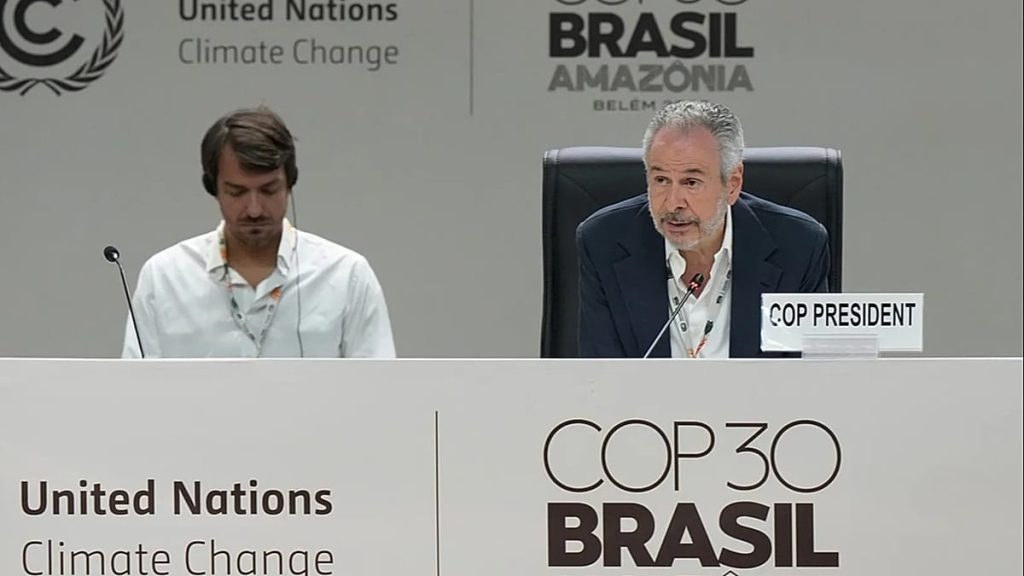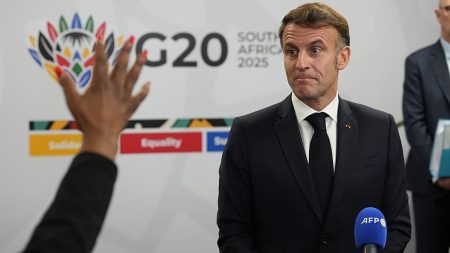The conclusion of the COP30 climate summit in Belém, Brazil, marked a pivotal moment in global climate action, though one tempered by significant compromise. After intense negotiations stretching into the late hours, nearly 200 nations reached an agreement, acknowledging the urgent need to address climate change despite falling short of a direct commitment to phase out الوقود الأحفوري (fossil fuels). This outcome reflects the complex geopolitical landscape and diverging national interests that continue to shape international climate policy.
اتفاق بيليم: تسوية وسط ضغوط متضاربة (The Belém Agreement: A Compromise Amidst Conflicting Pressures)
The road to the COP30 agreement was fraught with challenges. While governments aimed to demonstrate global unity in tackling the escalating climate crisis, the absence of a formal US delegation – the largest historical emitter – cast a shadow over the proceedings. The core of the debate centered on the inclusion of a clear “roadmap” for phasing out oil, gas, and coal. The European Union spearheaded a strong push for this inclusion, even threatening to reject the entire agreement if the issue wasn’t adequately addressed. Over 30 countries signed a letter explicitly warning Brazil against presenting a final text lacking a plan for fossil fuel reduction.
However, this European pressure met with staunch resistance from major producing and exporting nations, including Saudi Arabia, Russia, India, and several emerging economies. These countries argued for a more nuanced approach, prioritizing energy security and economic development. The resulting compromise saw the issue of الوقود الأحفوري relegated to a supplementary document presented by Brazil, rather than being enshrined in the official text. The EU reluctantly accepted the final agreement, acknowledging its limitations. “We won’t hide the fact that we would have preferred more, more ambition in everything,” stated European Climate Commissioner Wopke Hoekstra, adding, “We have to support it because it at least moves in the right direction.”
محاور الاتفاق الرئيسية: التمويل والتكيف ومراجعة التجارة (Key Pillars of the Agreement: Finance, Adaptation, and Trade Review)
The Belém Agreement centers around three key areas: bolstering climate finance, enhancing adaptation measures, and reviewing the intersection of international trade and climate action. It launches a voluntary initiative to accelerate climate efforts, encouraging nations to fulfill their existing emissions reduction pledges. The agreement also reaffirms the consensus reached at COP28 in Dubai in 2023, which called for a global transition away from الوقود الأحفوري.
A crucial component of the agreement is a call for developed nations to significantly increase funding for adaptation, aiming for at least a tripling of current levels by 2035. This responds to the urgent demands of developing countries, who are disproportionately vulnerable to the impacts of climate change, such as rising sea levels, extreme heatwaves, droughts, floods, and storms. These nations require substantial financial and technical support to build resilience and mitigate the effects of a warming planet.
Furthermore, the agreement initiates a process to examine how international trade policies can be aligned with climate objectives. This point, initially opposed by the EU, was incorporated into the final text following pressure from China and other emerging economies. This review is expected to address issues like carbon tariffs and the promotion of sustainable trade practices.
تباينات في المواقف وتحديات جيوسياسية (Diverging Positions and Geopolitical Challenges)
The international response to the agreement was mixed. China’s chief delegate, Li Gao, characterized the summit as a “success in a very difficult situation,” emphasizing the collective effort to demonstrate solidarity in addressing the climate crisis. However, France’s Minister for Ecological Transition, Monique Barbaux, criticized Saudi Arabia, Russia, India, and several other developing nations for blocking the inclusion of a commitment to phase out fossil fuels. She described the final text as “modest” but “not unacceptably bad.”
The summit wasn’t without its disruptions. Protests by Indigenous groups, who occupied and blocked access to the conference venue, highlighted the critical link between climate change and the rights of local communities. A fire that broke out within the complex on Thursday further underscored the fragility of the situation and led to partial evacuations.
The potential for failure loomed large, and reaching an agreement was a significant achievement for Brazilian President Luiz Inácio Lula da Silva, who positioned his country as a champion of “truthful” climate action. Lula stated that the world faced a choice between “continuing or surrendering” in a year where temperatures exceeded the 1.5°C threshold above pre-industrial levels. “And we chose the first option,” he declared. The absence of the US, due to President Trump’s decision to abstain from the summit, added another layer of complexity, demonstrating the challenges of maintaining international cooperation in a shifting geopolitical landscape. German State Minister for the Environment, Jochen Flasbarth, acknowledged the “complex geopolitical background” of the negotiations, stating, “Ultimately we had no other way.”
استضافة القمة القادمة وتطلعات مستقبلية (Hosting the Next Summit and Future Prospects)
In a separate development, Turkey and Australia reached an agreement to co-host COP31. Ankara will host the summit in November, while Canberra will oversee the formal negotiations. This agreement signals a continued commitment to maintaining the momentum of international climate discussions.
Despite the compromises, the Belém Agreement represents a step forward in global climate governance. While the absence of a direct commitment to phase out الوقود الأحفوري is a disappointment for many, the agreement’s focus on finance, adaptation, and trade offers a pathway for accelerated action. The success of COP30 will ultimately depend on the willingness of nations to translate these commitments into concrete policies and investments, and to build upon the foundation laid in Belém to forge a more ambitious and equitable climate future.

















